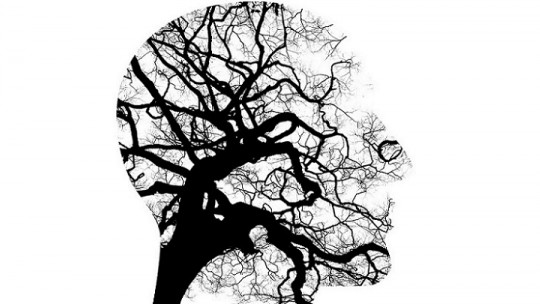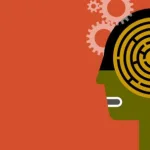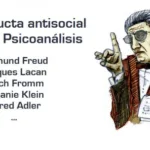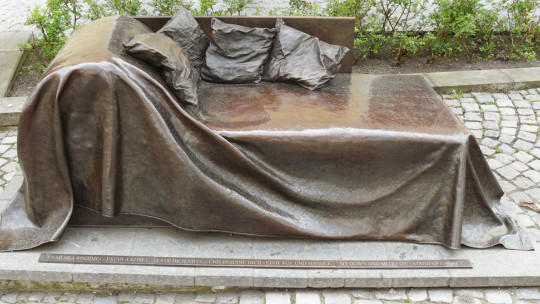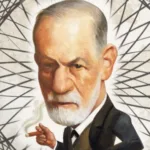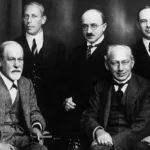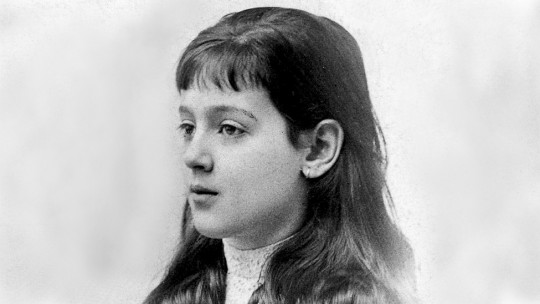
Disciple of Sigmund Freud and one of the most important authors of psychoanalysis, Melanie Klein is known for her adjustment of the psychoanalytic model to work with children.being one of the main authors in working with minors.
Melanie Klein’s psychoanalytic theory, although continuous in many aspects with Freud’s work, stands out for expanding and deepening aspects of development throughout childhood and creating a more focused approach on how the individual relates to objects ( generally understood as such other people), this being the basis of the theory of object relations.
Melanie Klein and object relations theory
Melanie Klein’s psychoanalytic theory It is based mainly on his theory of object relations. In this theory it is established that the subject relates to the environment based on the sensations and impulses that he feels and projects on the objects of his impulse. The relationships with these objects generate permanent traces that will mark the future relationship with others, internalizing the lived experiences and originating the psychological structure of the subject based on them.
So, the psychic configuration of a person It would be based on how the interaction with said objects has been related and internalized, with the individual developing based on it. That is to say, past learning is very important for Melanie Klein’s theory, unlike the biological current of the time, which defended the essentiality of genes.
The individual and his development
In Klein’s psychoanalytic theory, the human being is from birth in a constant state of conflict between instincts of life or love and death or hate. Throughout the development of the being, the subject must overcome the stages and conflicts typical of the life stage that is being experienced, forging a balance between the external and the internal through relationships with different objects and enriching them over time. your self, personality and character.
During this development, the individual will go through different phases, varying the way in which we grasp reality and relate our impulses and desires to it and reaching different milestones and aspects that help us generate an integrated self that allows us to deal with conflicts. between the desires of the id and the censorship of the superego.
The Self in psychoanalysis
Although Melanie Klein’s work is largely a follower of that of Sigmund Freud, there are some aspects in which divergences can be found.
One of the main ones is that while the father of psychoanalysis considers that at birth the human being is pure id, in Melanie Klein’s psychoanalytic theory It is believed that from birth the infant has a primitive self which allows you to bond with objects and project your own impulses and unconscious conflicts onto them.
Thus, initially object relations would be based on the projection of impulses and introjection of external stimulito develop a more or less differentiated self in the different stages or positions.
The positions of development
In Melanie Klein’s psychoanalytic theory it is established that Throughout development the human being goes through a series of stages in which the self and relationships with the environment develop. Specifically, it establishes the presence of two specific positions in childhood in which object relations and the anxieties derived from them evolve towards an integration of the ego, the paranoid-schizoid position and the depressive position.
The author proposes a moment of appearance for each one, but does not deny the possibility that adult subjects suffer some type of regression and/or fixation on one of them. Thus, the paranoid-schizoid position would be more linked to the emergence of psychotic disorders and the depressive position to neurotic disorders.
1. Paranoid-schizoid position
This position appears to be the first type of object relationship, which begins at birth and tends to last until six months of age. At this initial stage of development, the child is not yet able to identify what the self is and what is not, having a concrete thought and not being able to distinguish holistic elements.
By not being able to distinguish the self from the non-self, the child cannot integrate the joint existence of rewarding and aversive aspects in the same object, so he reacts by identifying the objects partially, causing them to Consider the existence of a good one that takes care of you and a bad one that harms or frustrates you. (this defense mechanism is called splitting), projecting its impulses and attempts onto them. The most important example and one that will have the greatest impact on the infant is that of the mother’s breast, which at times breastfeeds him and at other times frustrates him.
Due to the existence of a bad, persecutory object, the infant will develop anxiety and distress at the idea that he could attack him. In this way, a paranoid fear develops which in turn will awaken aggressive and sadistic instincts towards the object. Likewise, confusion and anxiety due to not knowing what object is going to be found are common.
If the child manages to introject the good aspect of objects (essentially the mother’s good breast) through experiencing more or better positive experiences than negative ones, he will be able to form a healthy self that allows him to move to the next position.
2. Depressive position
As the child matures, he begins to have greater development of the self and a better ability to discern what is the self from what is not, being now able to observe that objects are independent of themselves. This stage arises around six months after birth.
The good aspect of the objects is incorporated and introjected, specifically from the mother’s breastand the child is able to integrate the pleasant and unpleasant aspects of objects. Little by little we have come to see objects as a single element that can sometimes be good and other times bad.
Aggressive impulses decreaseand upon observing that the object is an independent entity, fear and anxiety arise over the possibility of its loss. Thus, in this position or stage, depressive-type anxieties appear, which are added to those of the previous position. Feelings of guilt and gratitude towards objects arise, and defense mechanisms such as instinct repression and displacement begin to be applied.
The Oedipus complex
One of the most controversial concepts in psychoanalytic theory is the Oedipus complex, which according to Freud appears throughout the phallic stage around three years of age. In Melanie Klein’s psychoanalytic theory, this complex is quite earlier, appearing together with the integration of partial objects into a total object during the depressive position.
In other words, Klein considers that an Oedipus complex exists from the moment the child is able to discern that his parents are individuals alien to him, observing that there is a bond between them of which he is not a part. The child projects his desires into said bondgenerating envy and provoking ambivalent feelings about it.
Later, the Oedipus complex proposed by Freud will appear, at the moment when ambivalence is reduced and the choice is made between desire for one parent and rivalry and identification with the other.
Symbolic play and unconscious fantasy
The ability to express oneself verbally and externalize thoughts, emotions, desires and experiences through words It develops throughout life. This capacity requires a certain level of maturational development and learning, as well as a certain capacity for introspection.
Thus, it is extremely complex for a child who has not completed his development to be able to express his drives, desires and anxieties. This is one of the main reasons why the free association method of Freudian psychoanalysis could not originally be applied to children.
However, the instinctual elements, the desires and fears that are part of each person, are present from birth. For Melanie Klein’s psychoanalytic theory, although in childhood these elements may not be conscious, they can be found symbolized in the generation of fantasies. In this way, unconscious fantasies They act as a method of expression of basic instincts and anxietiesprojecting these into the game and largely directing the child’s attitude and behavior.
In this aspect, one of the most valued contributions of Melanie Klein’s psychoanalytic theory is the introduction of symbolic play as a method of evaluation and work with minors. For Klein, play is a method of communication in which the infant externalizes his primary concerns and desires indirectly. In this way, by analyzing the symbolism contained in the play process it is possible to observe the unconscious fantasies that govern the child’s behavior in a way analogous to that used in free association methods applied in adults.
When using symbolic play, it is very important to setting or adjustment of the situation, that is, taking into account the need for the sessions, the type of furniture and toys to be appropriate for the child so that how they should play is not imposed on them. The child must choose those toys that he wants to use for himself, being able to freely express his fears, anxieties and desires through them.

